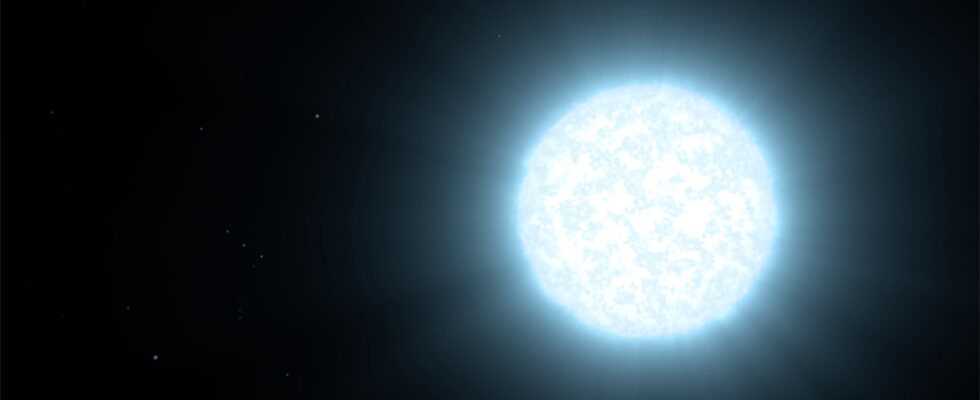It is the fate that awaits the Sun and many other stars that look like it: to become a white dwarf. But what is it, exactly?
One day the Sun will die. Not immediately: it still has 5 billion years to prosper. When the star runs out of hydrogen, which it uses as fuel, it will turn into a red giant, so large that it will engulf the planets Mercury, Venus and possibly Earth. Then, at the end of its life, it will become a very dense star: a white dwarf.
The Sun cannot become a black hole, unlike other stars. It’s just not massive enough for that. The evolution of stars, at the end of their life, depends on their starting mass: the most massive become black holes or neutron stars, while the least massive (with masses not exceeding 8 times that of the Sun) end their life as a white dwarf.
The mass of the Sun, packed into the size of the Earth
These objects are called white, because they are very hot, and called “dwarf”, because the radius of the star is reduced. ” A typical white dwarf is about as massive as the Sun, but only slightly larger than Earth [ndlr : les naines blanches ont un diamètre d’environ 10 000 kilomètres]explains NASA on the Goddard Space Flight Center website. This makes white dwarfs one of the densest forms of matter, surpassed only by neutron stars and black holes.. »
Because white dwarfs are very small, they are difficult for astronomers to detect. A good way to find them is to search among stars that have unexplained movement. That means they may be in a binary system, with a companion. This is for example what happened with Sirius. The motion of the star puzzled astronomers in the 19th century, as if it were orbiting another invisible object. We then understood that it is in fact two stars, a white star (Sirius A) and a white dwarf (Sirius B), which take 50 years to revolve around each other.
The Hubble telescope is a great help in spotting white dwarfs. He found more than 70 of them in 1995, while looking towards a globular cluster, M4, in the constellation of Scorpius. As NASA explains, some of these white dwarfs were as bright as a 100 watt light bulb that would have been placed at the distance of the Moon… Also, scientists can use the X-rays emitted by the interior of the dwarfs white to study them.
